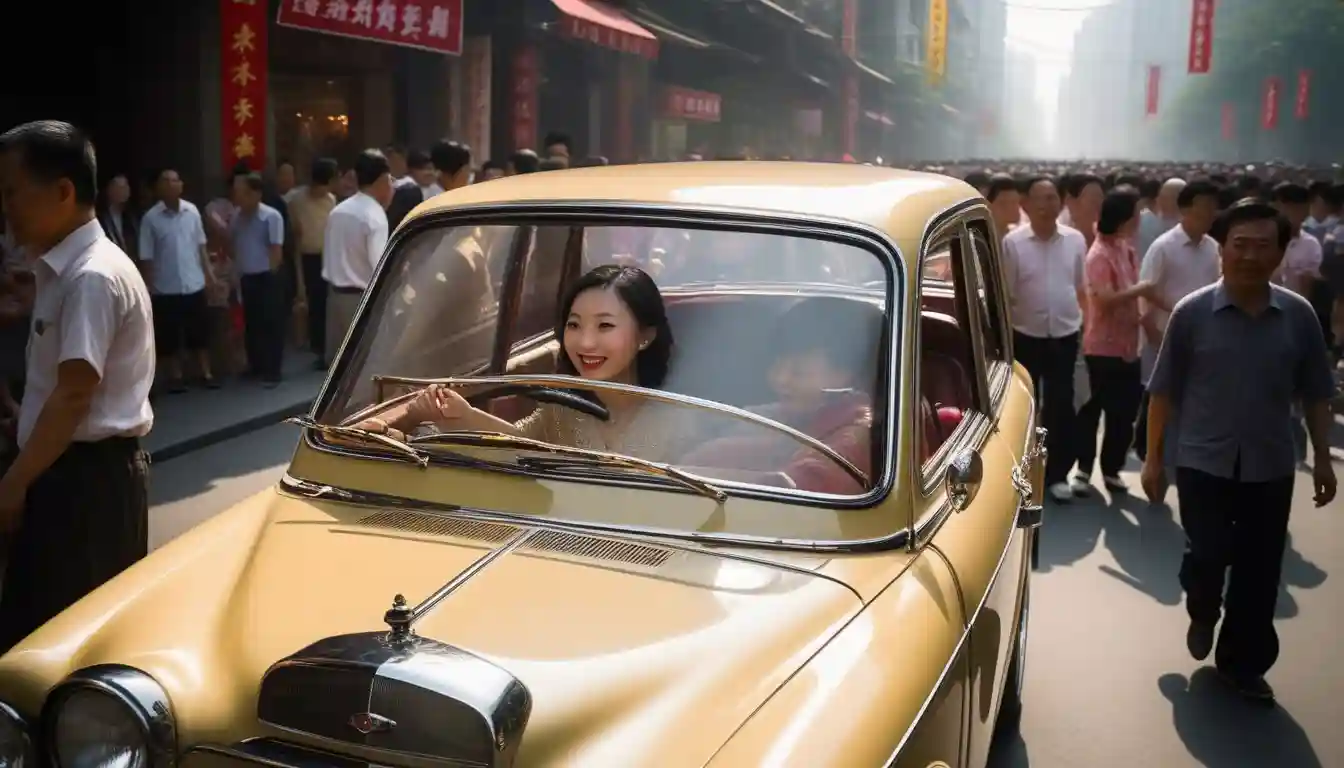
Fragile Alliance: China Opens Doors as Russia Slams Brakes on Auto Imports
A Tale of Two Policies: China Opens Doors as Russia Slams Brakes on Auto Imports
Moscow's recycling fee surge threatens Chinese EV dominance while Beijing extends unprecedented visa access
China and Russia unveiled divergent trade policies this month that illuminate the complex undercurrents reshaping Sino-Russian commercial relations. While Beijing granted Russian citizens unprecedented 30-day visa-free access starting September 15, Moscow simultaneously moved to throttle Chinese automotive imports through a dramatic restructuring of its recycling fee system, effective November 1.
The timing reveals the delicate balance both nations must strike between deepening bilateral ties and protecting domestic industries, with profound implications for global automotive supply chains and cross-border investment flows.
When Welcome Mats Meet Trade Barriers
China's visa liberalization represents the most significant reduction in travel barriers between the nations in decades. The one-year trial program, running through September 14, 2026, permits Russian citizens with ordinary passports to enter China for business, tourism, family visits, and exchanges without prior visa approval.
Yet even as Beijing rolls out the diplomatic red carpet, Moscow is constructing formidable barriers to Chinese automotive penetration. Russia's Ministry of Industry and Trade has proposed linking recycling fees to engine power output, with vehicles exceeding 160 horsepower facing exponentially higher import costs.
Industry observers note the stark policy contrast reflects each nation's strategic priorities. China seeks to strengthen people-to-people connections while diversifying its economic partnerships amid Western sanctions. Russia, meanwhile, appears increasingly focused on shielding its domestic auto industry from Chinese competition that has surged since European manufacturers exited the market.
The Mathematics of Market Protection
The proposed recycling fee restructuring targets the heart of Chinese automotive exports to Russia. Under current regulations, standard recycling fees of 3,400 rubles apply to most passenger vehicles. The new power-based progressive scaling would maintain these preferential rates only for vehicles under 160 horsepower.
For electric vehicles, Russia plans to calculate fees based on combined motor output, potentially subjecting high-performance Chinese EVs to substantially higher import costs. This methodology directly impacts popular Chinese electric models that have gained significant market share in Russia since 2022.
The policy shift builds upon earlier measures implemented in January 2025, when Russia increased recycling fees for electric vehicles and hybrids by more than twenty-fold compared to previous levels. The latest proposal adds another layer of complexity by incorporating power-based calculations, creating what amounts to a progressive taxation system for automotive imports.
Central Asia's Crossroads Under Pressure
The recycling fee increases pose particular challenges for Chinese exporters utilizing Central Asian transit routes through Horgos, Kashgar, and other border crossings. These pathways have become increasingly important as traditional European routes face geopolitical constraints.
Market participants operating through these channels report reassessing inventory strategies and risk exposure ahead of the November implementation date. Some have already begun shifting focus toward used vehicle exports and automotive aftermarket components, sectors that may face less regulatory pressure.
The changes also threaten to expand gray market activities, as higher official import costs could incentivize parallel import channels. However, enforcement mechanisms tied to power testing and documentation requirements may limit such alternatives while still raising end-user costs across all channels.
Industry Adaptation in Real Time
The automotive sector's response reveals the broader tensions within Sino-Russian trade relations. Chinese manufacturers face the challenge of maintaining market access while navigating increasingly complex regulatory landscapes designed to favor domestic production.
Russian automakers stand to benefit from reduced Chinese competition, particularly in the growing electric vehicle segment where Chinese brands have established strong positions. The recycling fee structure effectively creates price umbrellas under which domestic producers can compete more favorably.
Meanwhile, consumers may experience significant price increases across vehicle categories, potentially dampening overall market demand and shifting preferences toward lower-powered models that fall below the 160 horsepower threshold.
Economic Ripple Effects Beyond Automotive
The divergent policies reflect broader economic realities facing both nations. China's visa liberalization could stimulate tourism, business travel, and commercial exchanges, potentially offsetting some trade restrictions in other sectors. Russian visitors represent a significant market for Chinese tourism and retail sectors, particularly in border regions.
Conversely, automotive import restrictions may generate revenue for Russian state coffers while protecting employment in domestic manufacturing. The Ministry of Industry and Trade estimates the policy changes could generate 40-60 billion rubles in additional revenue during 2025.
Investment Landscape Recalibration
For institutional investors and trading professionals, these developments signal several key trends worth monitoring. Chinese automotive companies with significant Russian exposure may face margin compression and market share pressures, particularly in the premium and performance vehicle segments.
Conversely, Russian automotive manufacturers and related supply chain companies could experience improved competitive positioning. The policy changes may accelerate localization efforts and joint venture formations as Chinese companies seek to maintain market access through domestic production.
Currency implications also merit attention, as reduced automotive imports could affect ruble demand while increased tourism flows may support yuan-ruble exchange dynamics. The recycling fee increases effectively create a non-tariff barrier that could influence bilateral trade balances.
Portfolio managers focusing on emerging market automotive exposure should consider the precedent these policies establish. Similar power-based import restrictions could spread to other markets seeking to balance foreign investment attraction with domestic industry protection.
The transportation and logistics sectors serving Sino-Russian trade routes face operational adjustments as cargo compositions shift away from passenger vehicles toward other product categories. Companies specializing in automotive logistics may need to diversify service offerings or geographic focus.
Looking forward, the effectiveness of Russia's recycling fee strategy in protecting domestic production while maintaining consumer choice will likely influence policy decisions in other emerging markets facing similar competitive pressures from Chinese manufacturers. The outcomes could reshape global automotive trade patterns and investment allocation strategies across multiple markets.
Investment decisions should incorporate comprehensive risk assessments and professional financial guidance, as geopolitical developments can significantly impact market dynamics and asset valuations.